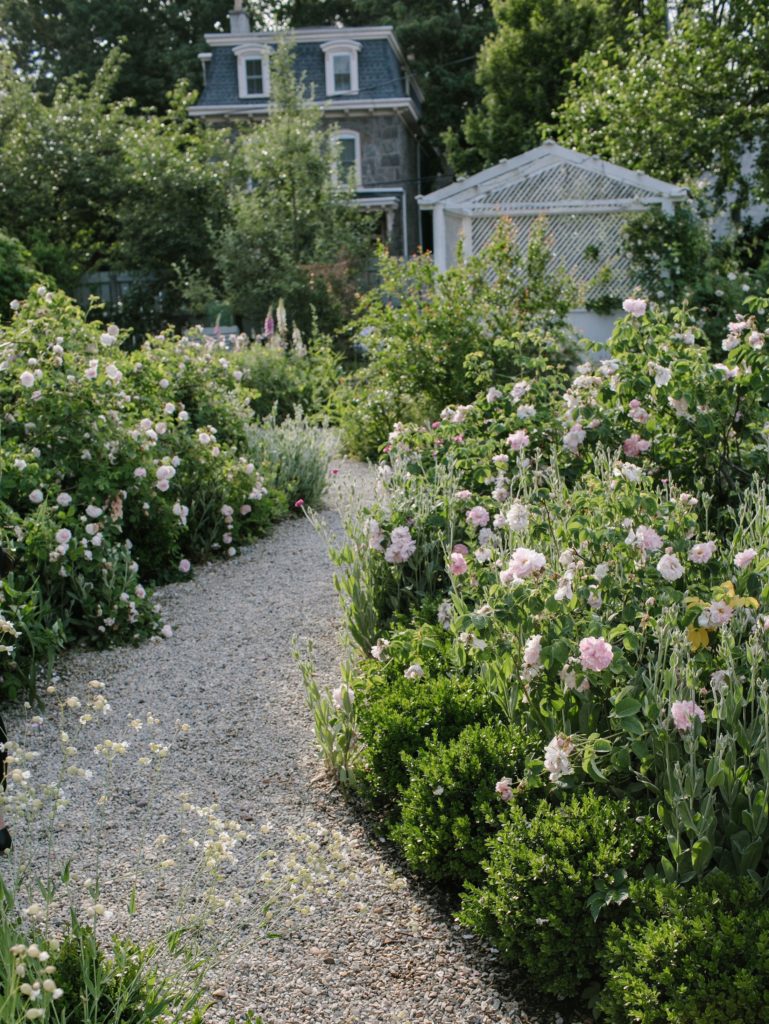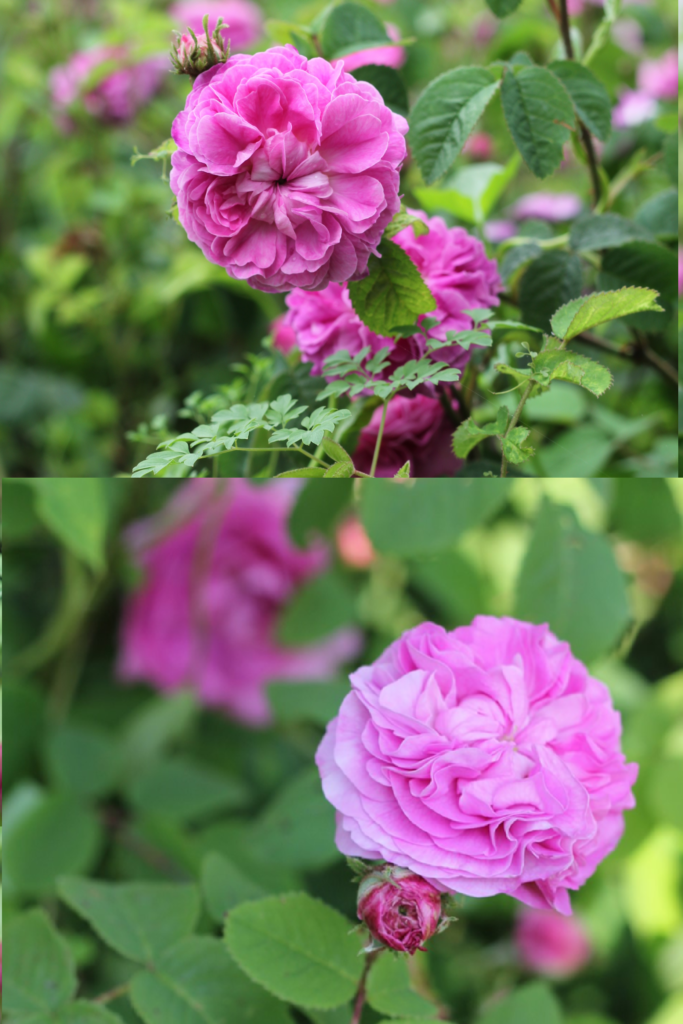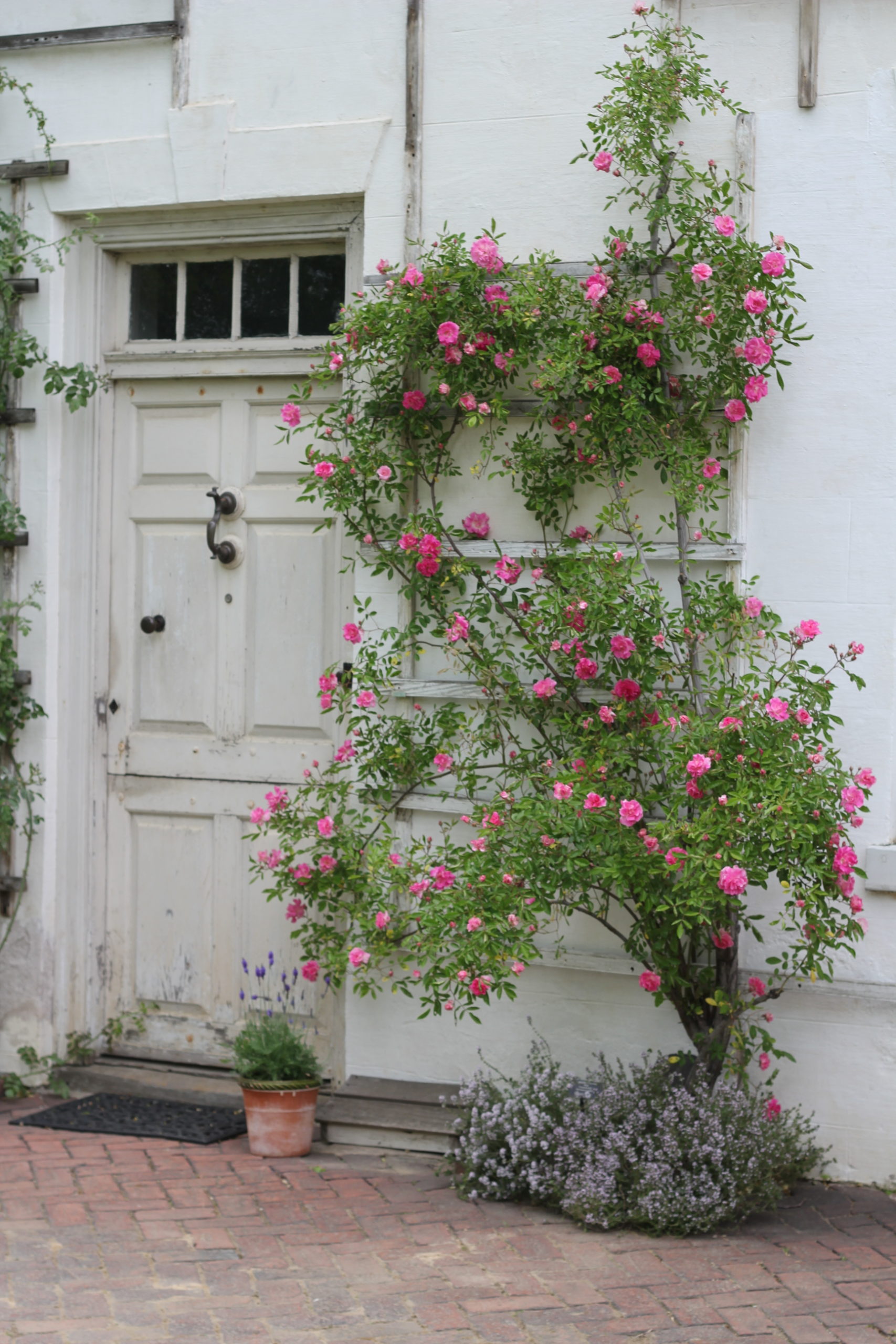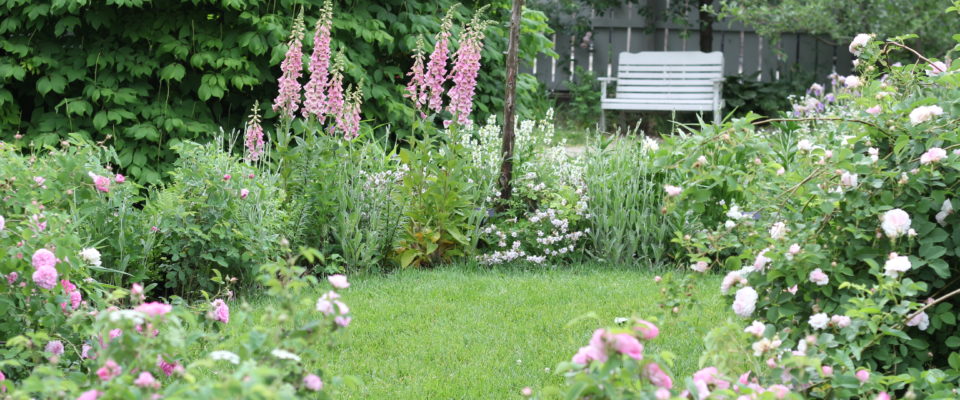Garden
Wyck’s historic roses bloom sometime mid-May to mid-June.
The garden is open to visitors Tuesday-Saturday 10am-4pm.
We hope to see you in the garden!
Overview
Wyck’s most beloved and treasured landscape feature is its 1820’s rose garden which still grows in its original plan, as revealed by sketches, plant lists, and correspondence held in the Wyck Papers. Today it stands as an authentic archetype of an early colonial American rose garden. A rare survivor of its time, it is widely recognized as the oldest rose garden in original plan in America, with 50+ cultivars of historic roses. Included in the garden are the original rose plants from the 19th century design, as well as plants from its earlier iteration as a kitchen garden in the 18th century. Several roses in cultivation today were thought lost until they were discovered growing at Wyck, and all specimens of these varieties available in commercial trade descend from Wyck’s collection.
Beginning with Rosa spinosissima in early May and ending with Rosa moschata in late October, Wyck’s historic roses are remarkable for their beauty as well as for their fragrance, which fills the garden. Wyck is a rare wonder for garden lovers and an important repository of plants that have disappeared from other historic gardens. Other areas of the property are planted not for decoration and pleasure but rather for practical purposes. In the late-17th and 18th centuries, the property extended all the way to present-day Wissahickon Avenue but was sold off in the 1850’s as Germantown developed into a desirable suburb.
The Oldest Roses
Stretching beyond the two centuries in which they have populated Wyck’s garden, Wyck’s living collection is a repository for many roses of great antiquity. The oldest roses in the garden are thought to have been planted in the late 1700’s as medicinal plants, including the stand of Rosa alba semi-plena (located to the right of the seating area known as the summerhouse). This variety dates to before 1629 and is thought to be the rose symbolizing the House of York during the War of the Roses in England. Extremely fragrant and bearing large quantities of rose hips later in the season, this rose was used often in medicinal applications during the Colonial era. Another rose of great antiquity in Wyck’s garden is ‘Pink Leda’, a damask rose that the first European settlers brought to America. A rose with deep roots locally, the ‘Celsiana’ was growing in Germantown by about 1750. It went by the local name Germantown Damask; it was also known as the Tobacco Rose because its fragrant petals were added medicinally to tobacco. Wyck’s garden also features the dowager of all old European roses, Rosa gallica officinalis, along with the striped sport ‘Rosa Mondi’. R. gallica officinalis has been cultivated since the Crusades. Also called the Apothecary Rose, it was highly valued for its medicinal properties historically.

The Mystery Roses

Several roses in the garden are mysteries. Among these is the ‘Elegant Gallica,’ a variety that would have been fully extinct had it not survived at Wyck and eventually been propagated for distribution commercially. An even rarer rose is ‘Lafayette,’ a gallica/damask hybrid which is available only through Wyck. It is believed to have been planted in honor of the Marquis de Lafayette’s visit to Wyck in 1825 during a return trip to Philadelphia. The name ‘Bella Donna’ referred to a number of roses throughout the 20th century, and great debates raged as to which rose was the real ‘Bella Donna’! The presence of the rose in Wyck’s garden, along with its name appearing on an early plant list, resulted in a decisive identification.
Top: ‘Lafayette’ rose Bottom: ‘Elegant Gallica’
The Early China Roses
Roses were introduced from China in the late-18th and early-19th centuries. These roses caused great excitement; a rose revolution! Small and twiggy, less hardy, and bearing a scant fragrance, China roses re-bloom regularly, a quality virtually nonexistent in roses up to that time. ‘Old Blush’ was one of the first, along with ‘Slater’s Crimson China’ and ‘Miss Wilmot’s China’. The latter was known in China as White Pearl in Red Dragon’s Mouth. A number of roses in Wyck’s garden represent rose breeding efforts in the 19th century to combine genes from the China roses with those of the old European favorites.
The 19th Century Roses
A number of roses in Wyck’s garden represent efforts in the 19th century to combine genes from the China roses with those of the old European favorites. The oval bed in the center of the parterres contains several such roses, including ‘Marquesa Boccella,’ ‘Victor Verdier,’ and ‘Baronne Prevost.’ Elsewhere in the garden are the similar ‘Rose de Rescht’ and ‘La Reine.’ Although not strong re-bloomers by today’s standards, these roses were considered an important step toward the ever-blooming roses that gardeners were beginning to demand. The first American rose hybrid was created in 1811; it arrived at Wyck by 1824. ‘Champney’s Pink Cluster’ was a cross between the two favorite roses of a South Carolina rice planter, the Musk rose and the China rose. It exhibits the best qualities of both parents, reblooming reliably and more fragrant than many other roses. Climbing roses were not commonly planted until the introduction of the wichuriaina rose from China in the late 19th century. This extremely vigorous plant is very hardy and can grow to 20 feet or more. The hybrid wichuriainas ‘American Pillar,’ ‘Silver Moon,’ ‘Dr. Van Fleet,’ and ‘Tausendschoen’ (the latter found in the lattice on the front of the house) reflect the popularity of climbing roses in the early 20th century.

The South Lawn
Historical sources refer to the portion of the property south of the house, west of Germantown Avenue, as the “South Lawn” or “the front of my house.” By about 1850 it came to be known as the “Woodlot.” Wyck historians believe that this area was originally planted with fruit trees. Documents from the 18th century describe a peach orchard here; other documents refer to mowing the woodlot, suggesting that this area was not heavily wooded and was probably maintained like a yard. The largest tree on the property today—and one of its most venerable—is a native tulip poplar planted in the 1830s. A large horse chestnut stands as a replacement for the Spanish chestnuts of which the family was so fond, wiped out by the chestnut blight of the early 20th century. The small pawpaw grove descends from pawpaws grown on the property for at least 100 years, probably many more. Residents in the early 20th century traded the suckers of the pawpaw—incidentally, the largest Native American fruit and closely related to the avocado—for bamboo from Grumblethorpe. Bamboo is now relegated to the southeast corner of the Woodlot, growing under the shade of a Paulownia tree.

